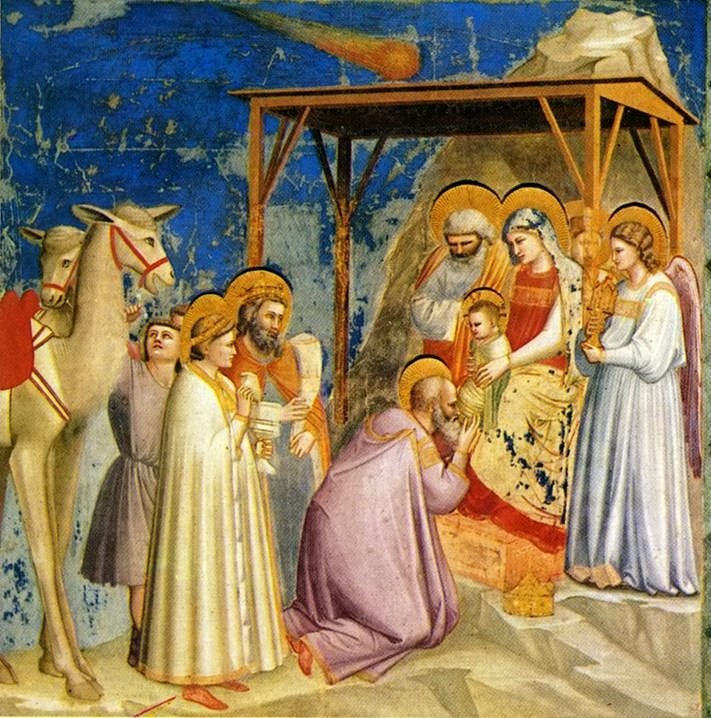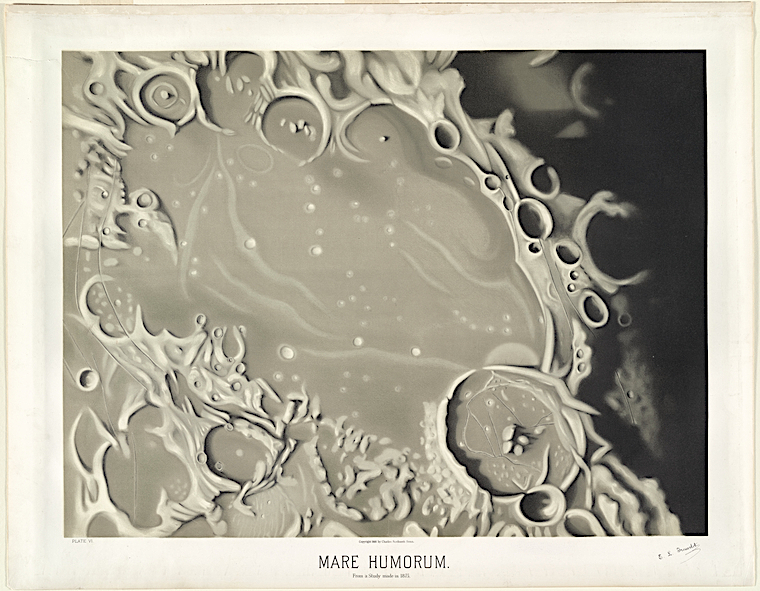Week 9 - Space and Art - Flora Huo
With imagination, when we look up at the sky, what we see is no longer an abstract light, but a different world with infinite possibilities. Scientists are exploring space in the real world. And artists are traveling in the imaginary world. And artists could create unique art products based on the exploration of the space with their imagination. There are a lot of space elements in some artwork.

https://en.wikipedia.org/wiki/Star_of_Bethlehem
Giotto, the pioneer of the Renaissance, recorded the comet that pierced the sky in his "Three Dynasties" written about 1301. During the period, a dazzling comet with a long tail was clearly visible, meaning the Star of Bethlehem, the "Christmas star" that marked the birth of Jesus. It is said that the star illuminated the morning in Bethlehem at the Nativity Stable and was later decorated at the top of the Christmas tree.

https://www.openculture.com/2021/09/the-brilliant-19th-century-astronomical-drawings-of-etienne-leopold-trouvelot.html
As people began to come into contact with science, artists also began to create more "scientific" universes. The works created by British cosmologist Robert Fludd in 1617 showed a cosmic model that is very close to the heliocentric theory. As science advances, artists use various art forms to record astronomical wonders seen through telescopes. This also makes space art more "scientific". The Augsburg Book of Miracles, published in the mid-16th century, is one of the most important art collections about the universe during the Renaissance. This book documents astronomical phenomena in the early universe. Following this, the astronomer Étienne Trouvelot from France hand-drawn The Trouvelot Astronomical Drawings, based on his own observations, within the limited naked eye observation limits (6 - 26 inch refractor telescope). At a time when the scientific level and observation technology were not developed, these pictures drawn by Trouvelot were extremely complete, and the details were very delicate, even very close to the cosmic planets we observe today.
https://medium.com/the-mission/how-space-art-will-get-us-to-mars-5b788395297d
“Giotto.” Encyclopædia Britannica, Encyclopædia Britannica, Inc., https://www.britannica.com/biography/Giotto-di-Bondone.
“Robert Fludd.” Encyclopædia Britannica, Encyclopædia Britannica, Inc., https://www.britannica.com/biography/Robert-Fludd.
Szulakowska, Urszula. “Robert Fludd and His Images of the Divine.” The Public Domain Review, https://publicdomainreview.org/essay/robert-fludd-and-his-images-of-the-divine.
“What Is Space Art?” International Association of Astronomical Artists, https://iaaa.org/what-is-space-art/.
Williams, Tom. “Artists Space.” Oxford Art Online, 2010, https://doi.org/10.1093/gao/9781884446054.article.t2085609.

Comments
Post a Comment